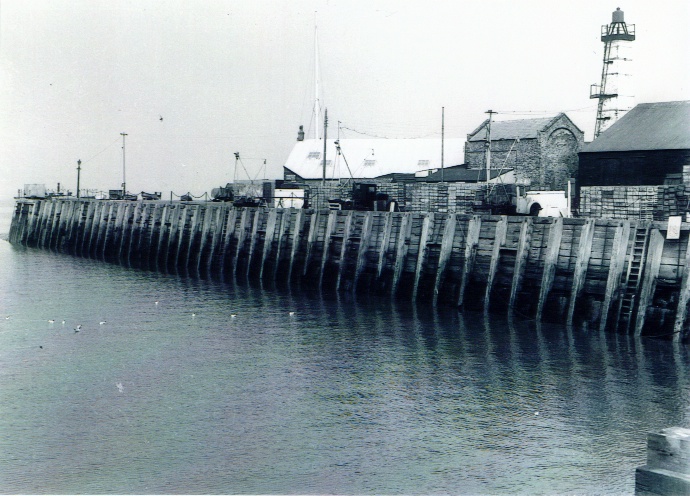A History of Me Previous Next
The 'Crab and Winkle Line' - Coke Ovens and Light Houses
 The The Harbour Light at Whitstable was mounted on the chimney of the engine house which had housed the old winding engine on East Quay for the Canterbury and Whitstable 'Crab and Winkle' railway. From 1846 the engine was used for pumping water for two coke ovens - the ovens were built between East Quay and the beach to convert coal into coke because the first steam engines on the line were coke fired. Coke production thus became the harbour's first manufacturing industry, ceasing 33 years later when coal fired locomotives took over in 1880
The The Harbour Light at Whitstable was mounted on the chimney of the engine house which had housed the old winding engine on East Quay for the Canterbury and Whitstable 'Crab and Winkle' railway. From 1846 the engine was used for pumping water for two coke ovens - the ovens were built between East Quay and the beach to convert coal into coke because the first steam engines on the line were coke fired. Coke production thus became the harbour's first manufacturing industry, ceasing 33 years later when coal fired locomotives took over in 1880
Technically the lighthouse was one of a pair of leading lights and when it shared the chimney used for the coke ovens the light was fixed to the external edge of the chimney at the top. Once the chimney was made redundant after the 1939-1945 War the light was placed on top of the smokeless stack. The stack was a white painted brick square chimney 50 feet high with a wide base that gradually narrowed towards the neck. At a height of 40 feet a small iron balcony was attached to the chimney on which was placed a polished copper lantern that showed a fixed red light visible for 5 miles indicating when the entrance to the harbour was prohibited. A fixed white light was shown from a polished copper lantern which was placed on metal legs at an additional 5 feet above the top of the chimney, making a total height of 55 feet.
The fixed white light was visible for 9 miles and in order to service it an iron gallery was built around the neck of the stack. Before the lights were converted to electricity they were powered by oil lamps and each light had its own chimney and air vent. An iron steeplejack ladder was bolted externally to the stack for the local lamp man to climb daily in order for the oil lamps to be refilled and lit.
East Quay was redeveloped in the 1960s and reopened in 1965 by which time the old chimney had been demolished and the lights saved and placed in the local museum. By the time that they had been converted to electricity the polished copper had been covered with black paint.
Next
Please feel free to contact me by e-mail at elliottsimpson@hotmail.com
March 2006
 The The Harbour Light at Whitstable was mounted on the chimney of the engine house which had housed the old winding engine on East Quay for the Canterbury and Whitstable 'Crab and Winkle' railway. From 1846 the engine was used for pumping water for two coke ovens - the ovens were built between East Quay and the beach to convert coal into coke because the first steam engines on the line were coke fired. Coke production thus became the harbour's first manufacturing industry, ceasing 33 years later when coal fired locomotives took over in 1880
The The Harbour Light at Whitstable was mounted on the chimney of the engine house which had housed the old winding engine on East Quay for the Canterbury and Whitstable 'Crab and Winkle' railway. From 1846 the engine was used for pumping water for two coke ovens - the ovens were built between East Quay and the beach to convert coal into coke because the first steam engines on the line were coke fired. Coke production thus became the harbour's first manufacturing industry, ceasing 33 years later when coal fired locomotives took over in 1880